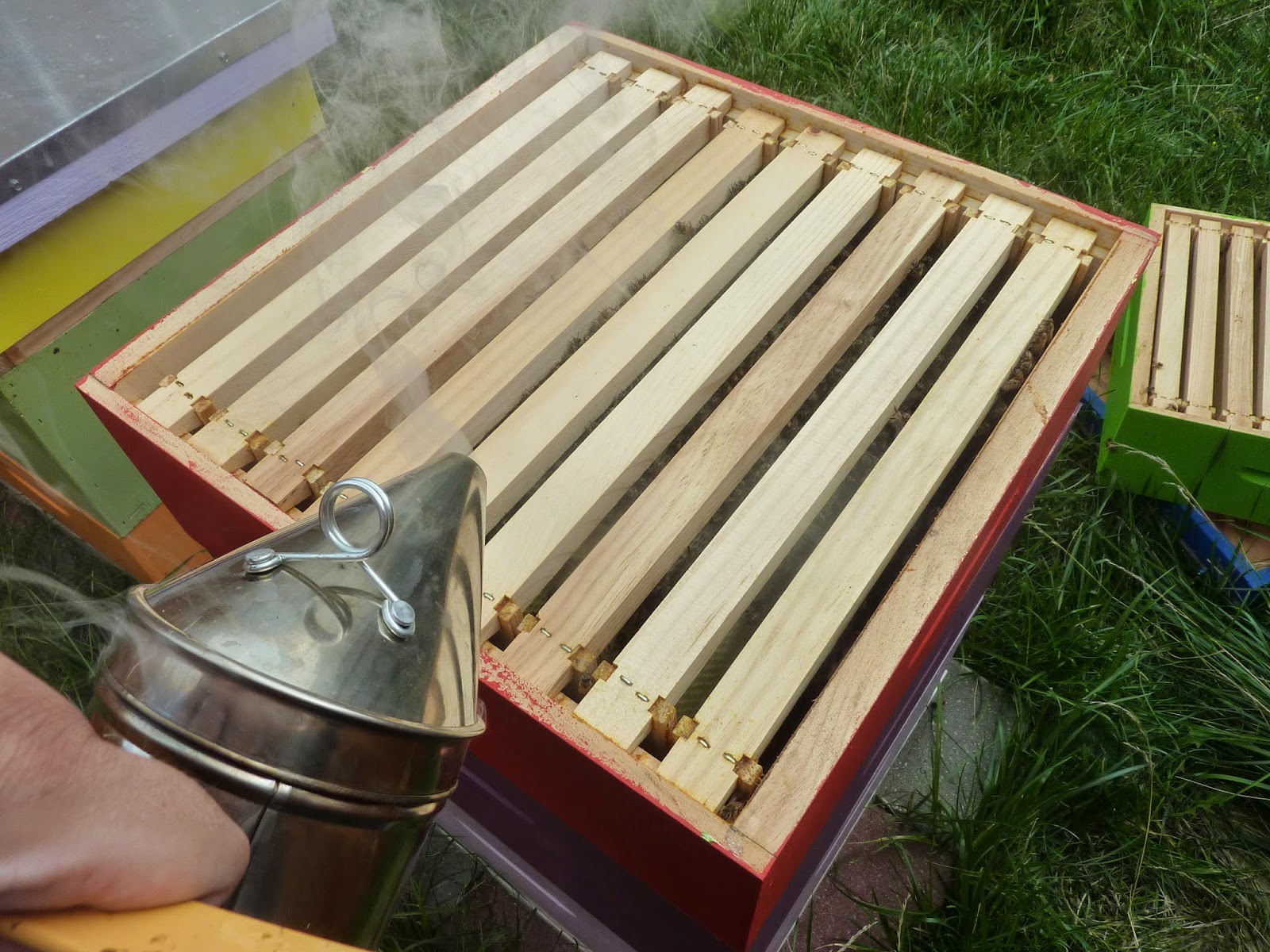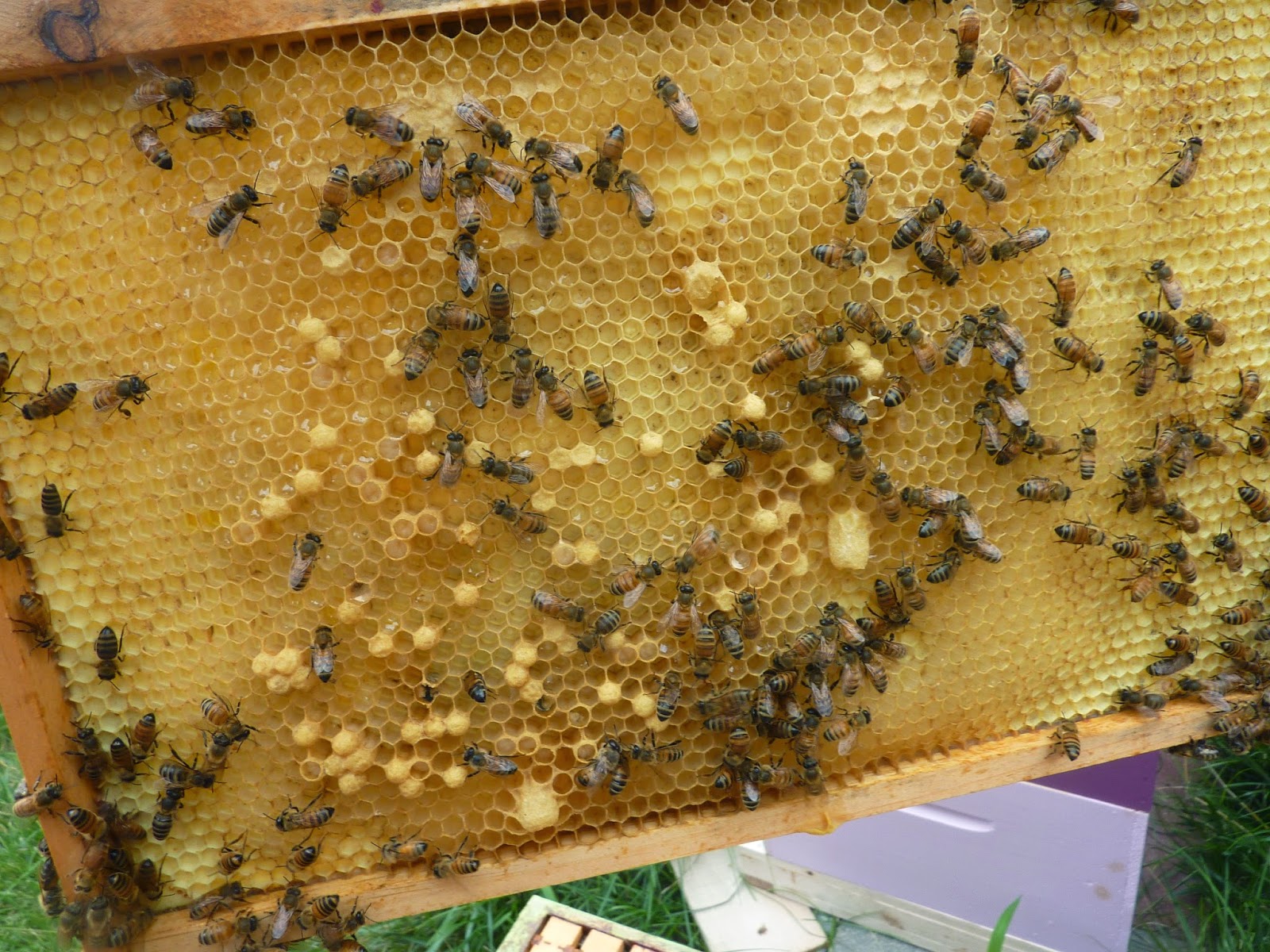While inspecting both hives today, I found the larger hive, Rose, to be going along great and doing well. Just plugging along and starting to build out and fill the lower super.
At the request of an old friend, I took my camera with me, to snap a few pictures. Here are some general photos I took. The first is a picture, of the super that Rose is currently working on. In the background, you can see the other super that goes on top of this one.
This next picture is one of the super frames that the hive is working on. The whiter section of the frame is where they've built out some comb, and the yellower tinted areas are empty foundation.
In this next photo, you can see in the top right hand corner where the comb (described above) is more visible. Some of the bees in this photo are building out more comb, and the ones with their heads in the cells are slowly filling the cells with nectar.
This is just a close up shot of the bees that were clustered around the bottom of the super frame.
I'm glad I had the camera with me, and I owe my friend a big thanks. If I hadn't taken it with me to take some general photos I would not have been able to document and explain what to look for to "diagnose" a laying worker.
In this case, I may never know why they no longer have a queen. It may be that she died. She may have been an old queen that came with the swarm from their original hive, and queens are only good for a couple years, usually 3 at the most. She may have been deemed not good enough by the colony, and they killed her, but whatever the reason, I don't believe they have a queen anymore.
Two weeks ago, when I gave Lavender a frame of brood from Rose, I checked and saw fresh eggs laid in Lavender's hive body, and celebrated it a bit, thinking the queen was settling in well. I now know better, because any new brood cells (and there aren't too many) are all drone cells. A laying worker doesn't have the physical ability to breed and carry sperm for fertilizing her eggs, but she can still lay the eggs. Unfertilized eggs will only ever grow into drone bees. So this colony is slowly going to die off without a queen.
In the following pictures, you can see the very spotty brood (not much has been laid) and each cell that's capped is rounded up a bit (rounded, capped cells are drones & flat, capped cells are workers).
I was able to come to this conclusion after a discussion with my Dad about what I saw (he was the one who suggested if all the capped brood is drone, that it's almost definitely a laying worker). His first suggestion is to give them a frame of capped brood and a frame of fresh eggs from Rose. Since talking with him on the phone, I haven't gone back out to switch the frames yet. I'm debating whether or not to buy a new queen from Walter T Kelley for the colony, to get a queen in there and laying sooner. I'm sad that this smaller hive has had such a huge setback, and now torn about how to fix it. At any rate, I can't wait very long to decide on a course of action, so I'll have another update soon.
Hope all of you readers enjoy the extra pictures in this post :)
Hope all of you readers enjoy the extra pictures in this post :)








No comments:
Post a Comment